Italy

Sergente Maggiore Guglielmo Biffani
Italy

Sergente Maggiore Guglielmo Biffani
27 March 1915 – December 2006
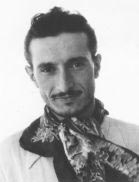
Image kindly provided by Fulvio Chianese at GORIZIA ed il QUARTO STORMO.
Giglielmo Biffani was born in Ostia on 27 March 1915.
He ended his studies as an aircraft civil engineer in 1931.
He received his pilot license in Napoli in 1933, flying the Caproni Ca.100.
In 1936 he joined the Regia Aeronautica and posted to Foggia where he qualified on his military pilot license flying the Breda 25 and CR.20.
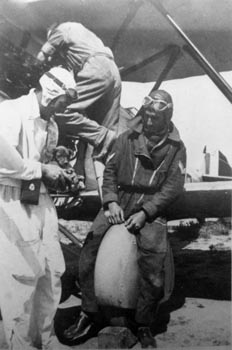
On 1 August 1936 he was posted to the 73a Squadriglia, 9o Gruppo, 4o Stormo at Gorizia.
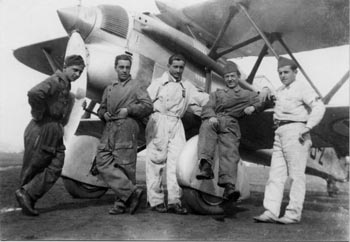
In 1937 he volunteered for the Spanish Civil War. At this time he only had 200 hours of flying.
Together with some other volunteers from 4o Stormo they left Italy from La Spezia on transport ship and landed at Palma de Majorca where they were sent to the airbase at Son San Juan. Here he met Leonardo Ferrulli. The commander was Tenente Giuseppe D’Agostinis, who later was replaced by Capitano Rolando Pratelli.
During the Spanish Civil War he made about 300 hours of flying, mostly over the Balearis and the Mediterranean during thirteen months.
After returning from Spain he was part of 4o Stormo’s aerobatics team.
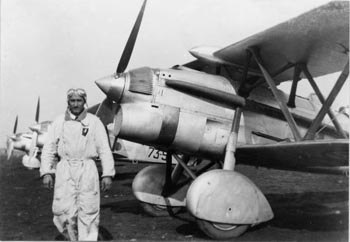
In the beginning of July 1940 the 9o Gruppo was sent to Comiso, Sicily to fly missions in the assault on Malta.
At dawn on 4 July, 24 CR.42s led by Maggiore Ernesto Botto took off from Comiso and headed south-east. When they reached the 36th Parallel, they headed towards Malta, thus having the rising sun at their backs. Approaching Hal Far airfield, Botto, Sergente Biffani, Sergente Maggiore Sergio Stauble, Capitano Giuseppe Mauriello (97a Squadriglia), Tenente Riccardo Vaccari and Sergente Maggiore Massimo Salvatore dived to attack.
The escort was composed by six CR.42s of the 73a Squadriglia led by Tenente Vittorio Pezzè 600 m above, six of the 97a Squadriglia led by Capitano Antonio Larsimont at 2000 m and finally by six of the 96a Squadriglia led by Capitano Roberto Fassi at 4000 meters.
Botto and his pilots attacked Hal Far by grazing the ground, and strafed a bomber and seven Gladiators that however did not burn. Intense anti-aircraft fire damaged two aircraft of the 96a Squadriglai; Salvatore’s, which had the ailerons shot out of use and Vaccari’s, which was hit at the leading edge of left wing. Two British fighters were spotted at 2000 m but these didn't attack the Italians. After the strafe, Botto’s flight hid in a cast of clouds and all the CR.42s returned home.
The Italian War Bulletin no. 25 reported:
"A formation of fighters, defying bad weather and intense AA fire, performed a brilliant strafing attack on the airfield of Hal Far (Malta), disabling eight aircraft parked there. All our aircraft came back home."According RAF records the actual result from the attack was two damaged Swordfishes from 830 Squadron of which both were repairable.
On 12 July 1940, the 9o Gruppo C.T. arrived at Tripoli from Comiso with 33 Fiat CR.42s under the command of Maggiore Ernesto Botto. The Gruppo consisted of 73a, 96a and 97a Squadriglie.
The 73a Squadriglia included Tenente Vittorio Pezzè (CO), Tenente Valerio De Campo, Tenente Giulio Reiner, Tenente Pietro Bonfatti (assigned in the end of July), Sottotenente Giuseppe Oblach, Sottotenente Carlo Battaglia, Sottotenente Alvaro Querci, Maresciallo Mario Ruffilli, Maresciallo Alberto Montanari, Maresciallo Norino Renzi, Maresciallo Corrado Ranieri, Sergente Maggiore Biffani, Sergente Maggiore Enrico Dallari, Sergente Maggiore Sergio Stauble, Sergente Maggiore Antonio Valle, Sergente Santo Gino, Sergente Lido Poli, Sergente Pasquale Rossi, Sergente Mario Guerci (still in training) and Sergente Armando Matacena (still in training).
Together with the 10o Gruppo they formed the 4o Stormo C.T.
The Gruppo’s Fiat CR.42s was wisely retrofitted with tropical kits for guns and engines, to avoid the problems suffered by the other Gruppi.
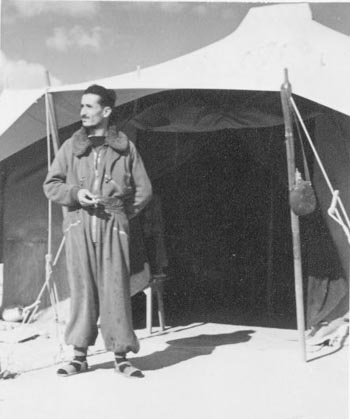
During the night of 9 September 1940, the 4o Stormo started a night alarm service from T3 with pilots from the two Gruppi on alerts during cloudless full moon nights. Later the alarm duty was carried on even without the help of moonlight. The equipment for this kind of service was extremely primitive. The aircraft took off with the help of two lamps put at the end of the airstrip, while three lamps signalled its middle. In case of total absence of light, take-offs and landings were done with the headlights of cars and camions. There was no radio communications so the presumed direction of enemy aircraft was given to the pilot from the ground using machinegun tracers. The CR.42 only had basic instruments and was without illumination in the cockpit so the pilots used torchlight to read anemometer, altimeter and variometer, their only help during night flight.
In the 9o Gruppo Tenente Vittorio Pezzè and Sergente Maggiore Biffani (both of the 73a Squadriglia) were two of the few pilots able to do this job. Biffani remembered that the big dimensions of El Adem and the low landing speed of the Fiat were his greatest help during these missions.
In the afternoon on 9 December, SM 79s were out to bomb British troops at the Sidi Barrani - Bir Enba area. They were to be escorted by 19 CR.42s of the 9o Gruppo led by Maggiore Ernesto Botto, which had taken off from El Adem at 14:55. The fighters included seven from the 73a Squadriglia (Tenente Valerio De Campo (CO), Tenente Giulio Reiner, Sottotenente Alvaro Querci, Sergente Maggiore Biffani, Sergente Maggiore Enrico Dallari, Sergente Maggiore Antonio Valle and Sergente Santo Gino) seven from the 97a Squadriglia (Capitano Antonio Larsimont Pergameni (CO), Tenente Ezio Viglione Borghese, Sottotenente Riccardo Vaccari, Sergente Maggiore Otello Perotti, Sergente Maggiore Massimo Salvatore, Sergente Angelo Golino and Sergente Alcide Leoni) and four from the 96a Squadriglia (Tenente Aldo Gon and Sergente Giuseppe Tomasi together with two unknown pilots).
More Italian fighters were up to escort the bombers and at 15:10, Sergente Maggiore Fiorenzo Milella of the 366a, 151o Gruppo, attached to a formation of nine CR.42s of the 368a Squadriglia (Capitano Bruno Locatelli, Sergente Maggiore Davide Colauzzi, Sergente Ernesto De Bellis, Sottotenente Furio Lauri, Sergente Maggiore Annibale Ricotti, Tenente Orfeo Paroli, Sergente Piero Hosquet, Sergente Stefano Fiore, Sergente Ottorino Ambrosi) were out to escorted Italian bombers in the Bir Enba area.
The rendezvous with the bombers over A3 failed and after 20 minutes, the fighters of the 9o Gruppo arrived and together they proceeded towards the front on a free sweep. Three SM 79s were discovered and escorted for a while. Over Buq-Buq, a Hurricane strafing along the coastal road was discovered and the SM 79s were left to the 9o Gruppo while the CR.42s of the 151o Gruppo attacked the British fighter. The Hurricane was claimed shot down in flames and credited to the formation (but in fact only Locatelli, Lauri, Paroli and De Bellis fired their guns).
The 151a Gruppo fighters returned to base at 16:50.
Meanwhile the fighters from the 9o Gruppo continued and 30 km south of Bir Enba they spotted some Gladiators at a lower level and dived on them, but suddenly the CR.42s were jumped by a reported two Squadrons of Hurricanes or Spitfires, attacking respectively the 73a Squadriglia and the 96a Squadriglia with the 97a Squadriglia. A large dogfight started and after 20 minutes of combat many claims were submitted by the Italian pilots
Tenente Vaccari fought alone against four Hurricanes, claiming one destroyed (as a Spitfire) and damaging the others before his Fiat was hit in the fuel tank and in the engine. He crash-landed near Sollum, the aircraft turning over and caught fire; he was burned in the face and hands. Sergente Maggiore Salvatore claimed a Spitfire and several damaged before being wounded in his left arm. He managed however to return to base. Sergente Golino was hit in his back, but managed to claim his attacker before being compelled to evade and land at Amseat A3. Sergente Maggiore Biffani (Fiat CR.42 MM5599/73-9) claimed a Hurricane but was at the same shot down by his victim and was captured. He recalled:
"In the afternoon of 9 December we were flying between Mersa Matruh and Buq-Buq, when my wingman, Sottotenente Alvaro Querci, warned me that we had enemies behind us. I alerted Botto by shooting a burst [Note that the CR.42 had no radio during this period], then I realized they were near my tail, so I made a 180-degree turn and I saw them pass: they were three Hurricanes. I climbed almost vertically and saw the 73a Squadriglia in front, the three Hurricanes behind it and 96a and 97a Squadriglia behind them, all in a vertical line that went down to the ground. Then I discovered a Hurricane that was breaking off from the combat, clearly he had seen the other Italian fighters on its tail. I continued to climb, now I was the highest fighter of them all, then I dived down at full throttle [towards the escaping Hurricane]. I arrived near it and then I reduced speed and put the revolutions between 1850 and 2250 because otherwise I would had cut my propeller as happened to Gon and others, because the airscrew went out of gear and the round was fired when it passed in front of the gun (…) . When I closed to it, I opened fire. I aimed and saw the explosive bullets that exploded on the wing. Why didn’t anything happen? Was there no fuel at all? I fired at the other wing but it was the same, the bullets exploded but nothing happened. I fired into the engine, nothing happened. I saw the tracers very well, and after all, it wasn’t the first time I was shooting. At Gorizia I used to hit the target balloon with ten rounds only. In the meantime, I was losing speed and falling behind, O.K. Goodbye! It passed and turned towards me again -so I hadn’t caused any damage to it- , and I did the same. We found ourselves face to face at a distance of around 500-600 metres. I started firing and saw my tracers hitting it, then its wings lit up and in the same moment my plane caught fire, it was just an instant. My plane was severely damaged and while I was trying to land I saw the Hurricane that dived into the ground and exploded. I saw no parachute. I force-landed among British MTs and was immediately taken prisoner. I went back home after 63 months of POW!"Additional Hurricanes were claimed by Botto, Sergente Dallari, Sergente Valle and an unknown pilot of the 73a Squadriglia (it is possible that this was a shared claim). It seems possible that also Sergente Maggiore Perotti claimed a victory (this claim is disallowed in the 97a Squadriglia diary, who only credits him with some Spitfires damaged).
“The enemy engaged in dogfight. Claim one E a/c for certain (saw it hit the ground). Attacked two in tight vic and was at 200 yards point blank range and fell certain must have killed pilots. Got another good and point blank deflection shot at another. Closed from optimum to point blank range at first. Must (?) have shot down the first two but could not spare time to confirm. 3rd point blank deflection shot likely and fourth adversary saw it hit the ground (claim 1 confirmed and 2 others which I feel certain about but must go down as unconfirmed).”Flight Lieutenant Lapsley (he delivered a head-on attack) reported:
“The enemy fired back. 1 CR 42 shot down and seen to hit the ground without burning. Several other machines were shot at individually. They can out manoeuvre a Hurricane but one can get away and then come back.”Pilot Officer Mason (he was discovered during the approach and had to dogfight from the beginning) reported:
“The enemy tried to turn inside me. 1 CR 42 shot at short range from above into cockpit. Aircraft turned (unreadable) with sparks from it. Followed it down until attacked by others CR 42s. Using 15o flap climb (unreadable) but not quite equal to 42. Speed on level far superior. Possible when attacked from above to turn and deliver short head on burst.”Flight Lieutenant Wykeham-Barnes reported:
“The enemy dog fought, during dogfight damaged two enemy and sent one down out of control but could not see it crash as another was in my tail. The enemy fairly aggressive.”Flying Officer Patterson (he delivered a quarter attack from port side) reported:
“The enemy started a general dogfight. 1 CR 42 shot down and seen to burn out on the ground”.The 274 Squadron Hurricanes all had landed at 17:00.
After his imprisonment he was first sent to Egypt, then to Ismailia and then to India.
After a year or two they were transferred to us to Bopal, south of Bombay.
After the Italian capitulation he decided to co-operate (like many others) with the Allies.
They were shipped to Glasgow, England and he remained in England until they were repatriated.
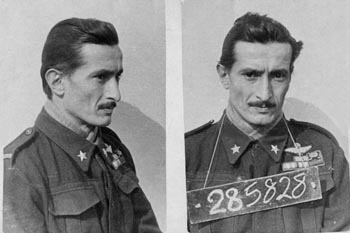
When returning to Italy he re-joined 4o Stormo.
Biffani ended the war with 1 biplane victory.
He continued to serve in the Italian Air Force after the war during which he flew P-51s, P-38s, F-86s, T-33s and Vampires.
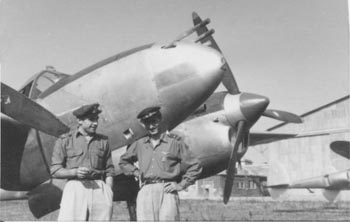
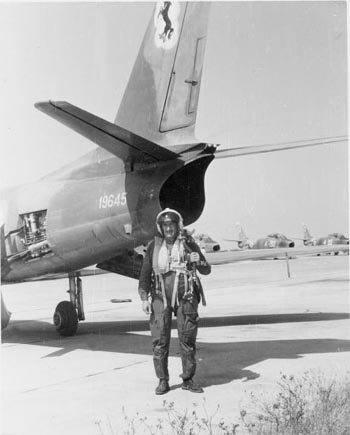
He went to Paris to attend a course to become a GCA (Ground Controlled Approach) instructor. After finishing the course he returned to Turin where he had a Savoia Marchetti 102 and a C45 to his disposal and with these he instructed in the GCA procedures.
After his retirement from the Air Force, he worked as an instructor in Libya.
After retirement, he lived in Rome.
Guglielmo Biffani passed away in Ostia Antica in December 2006.
Claims:
| Kill no. | Date | Time | Number | Type | Result | Plane type | Serial no. | Locality | Unit |
| 1940 | |||||||||
| 1 | 09/12/40 | 14:55- | 1 | Hurricane (a) | Destroyed | Fiat CR.42 | MM5599 | 30 km S Bir Enba | 73a Squadriglia |
Biplane victories: 1 destroyed.
TOTAL: 1 destroyed.
(a) Probably claimed in combat between 9o and 151o Gruppi and 33 and 274 Squadrons. 9o Gruppo claimed eight shot down, three probables and several damaged while losing two CR.42s and four force-landed. The 151o Gruppo claimed one Hurricane without losses. 33 and 274 Squadrons claimed seven or eight CR.42s and three probables while one Hurricane (33 Squadron) had to force-land and a second (274 Squadron) was damaged.
Sources:
3o Stormo, storia fotografica - Dai biplani agli aviogetti - Carlo Lucchini and Leproni Enrico, 1990 Gino Rossato Editore
9o Stormo da Bombardamento Terrestre (1934-1943) - Giovanni Tonicchi, 1997, Tarquinia kindly provided by Stefano Lazzaro
Buscaglia e gli Aerosiluranti - Orazio Giuffrida, 1994 Ufficio Storico Aeronautica Militare, Rome kindly provided by Stefano Lazzaro
Dai Biplani agli Aviogetti - Carlo Lucchini and Enrico Leproni, 1990 Gino Rossato Editore, Valdagno kindly provided by Stefano Lazzaro
Desert Prelude: Early clashes June-November 1940 - Håkan Gustavsson and Ludovico Slongo, 2010 MMP books, ISBN 978-83-89450-52-4
Desert Prelude: Operation Compass - Håkan Gustavsson and Ludovico Slongo, 2011 MMP books, ISBN 978-83-61421-18-4
Ernesto Botto, Gamba di Ferro - Ferdinando Pedriali, Storia Militare no. 96 (IX), September 2001 kindly provided by Stefano Lazzaro
Fighters over the Desert - Christopher Shores and Hans Ring, 1969 Neville Spearman Limited, London
GORIZIA ed il QUARTO STORMO
Hurricanes over Tobruk - Brian Cull with Don Minterne, 1999 Grub Street, London, ISBN 1-902304-11-X
Il 5o Stormo - Giuseppe Pesce and Nicola Malizia, 1984 STEM Mucchi, Modena kindly provided by Stefano Lazzaro
Il 23o Gruppo Caccia - Nicola Malizia, 1974 Bizzarri, Roma kindly provided by Stefano Lazzaro
Il 101o Gruppo Tuffatori - Giuseppe Pesce, 1975 STEM Mucchi, Modena kindly provided by Stefano Lazzaro
Il Caccia Re 2000 e la storia delle "Reggiane" - Sergio Govi, 1983 Giorgio Apostolo Editore, Milan kindly provided by Stefano Lazzaro
Il caccia RE 2001 - Sergio Govi, 1982 Giorgio Apostolo Editore, Milan kindly provided by Stefano Lazzaro
Il Fiat CR 42 l’ultimo biplano da caccia Italiano – Nicola Malizia, 2003 Editrice Innocenti, Grosseto, kindly provided by Ludovico Slongo
Il Walzer del 102o Gruppo - Giuseppe Pesce, 1976 STEM Mucchi, Modena, kindly provided by Stefano Lazzaro
Italian Aces of World War 2 - Giovanni Massimello and Giorgio Apostolo, 2000 Osprey Publishing, Oxford, ISBN 1-84176-078-1
La Regia Aeronautica - volume I: Dalla non belligeranza all'intervento – Nino Arena, 1981 USSMA, Rome kindly provided by Stefano Lazzaro
Messerschmitt Bf 109 - Gregory Alegi and Marco Gueli, 2002 Ali Straniere in Italia no. 1, La Bancarella Aeronautica, Turin, kindly provided by Stefano Lazzaro
Quelli del Cavallino Rampante - Antonio Duma, 1981 Editore Dell'Ateneo, Roma, kindly provided by Stefano Lazzaro
Storia degli Aerosiluranti Italiani - Carlo Unia, 1974 Edizioni Bizzarri, Rome, kindly provided by Stefano Lazzaro
Stormi d'Italia - Giulio Lazzati, 1975 Mursia, Milan kindly provided by Stefano Lazzaro
The Messerschmitt 109 in Italian service 1943-1945 - Ferdinando D'Amico and Gabriele Valentini, 1989 Monogram Aviation Publication, Boylston, ISBN 0-914144-30-8, kindly provided by Stefano Lazzaro
Woody - A Fighter Pilot's Album - Hugh A. Halliday, 1987 Canav Books, Toronto, ISBN 0-9690703-8-1
Additional information kindly provided by Carlo Biffani, Eugenio Costigliolo, Stefano Lazzaro and Ludovico Slongo.


